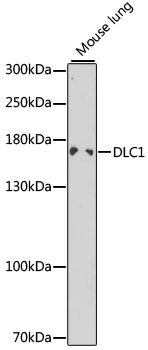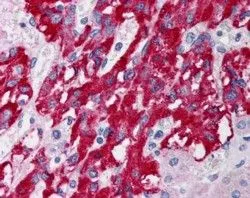DLC1 antibody [C2C3], C-term
GTX113607
ApplicationsWestern Blot, ImmunoHistoChemistry, ImmunoHistoChemistry Paraffin
Product group Antibodies
TargetDLC1
Overview
- SupplierGeneTex
- Product NameDLC1 antibody [C2C3], C-term
- Delivery Days Customer9
- Application Supplier NoteWB: 1:500-1:3000. IHC-P: 1:100-1:1000. *Optimal dilutions/concentrations should be determined by the researcher.Not tested in other applications.
- ApplicationsWestern Blot, ImmunoHistoChemistry, ImmunoHistoChemistry Paraffin
- CertificationResearch Use Only
- ClonalityPolyclonal
- Concentration1 mg/ml
- ConjugateUnconjugated
- Gene ID10395
- Target nameDLC1
- Target descriptionDLC1 Rho GTPase activating protein
- Target synonymsARHGAP7, HP, STARD12, p122-RhoGAP, rho GTPase-activating protein 7, Rho-GTPase-activating protein 7, START domain-containing protein 12, StAR-related lipid transfer (START) domain containing 12, deleted in liver cancer 1 protein, epididymis secretory sperm binding protein, rho-type GTPase-activating protein 7
- HostRabbit
- IsotypeIgG
- Protein IDQ96QB1
- Protein NameRho GTPase-activating protein 7
- Scientific DescriptionThis gene is deleted in the primary tumor of hepatocellular carcinoma. It maps to 8p22-p21.3, a region frequently deleted in solid tumors. It is suggested that this gene is a candidate tumor suppressor gene for human liver cancer, as well as for prostate, lung, colorectal, and breast cancers. Alternative splicing at this locus results in several transcript variants encoding different isoforms. [provided by RefSeq]
- Storage Instruction-20°C or -80°C,2°C to 8°C
- UNSPSC12352203
References
- Sanchez-Solana B, Wang D, Qian X, et al. The tumor suppressor activity of DLC1 requires the interaction of its START domain with Phosphatidylserine, PLCD1, and Caveolin-1. Mol Cancer. 2021,20(1):141. doi: 10.1186/s12943-021-01439-yRead this paper







